Recommendation points
- Features of designing curtains for the kitchen: the choice of material, models and sizes
- Preparation of patterns and calculation of material for curtains on hinges
- We take out the sewing machine and start to sew
- We decorate the kitchen window with a finished product
If you do not like the curtains for the kitchen presented in the stores, then it’s time to think about how to sew them yourself. We will tell you how to sew curtains on the hinges yourself, having a simple sewing machine and a little experience, without using complex patterns and curtain tape.
There are different types of curtains: classic curtains with 2 or 3 rows of guides, roller blinds, Roman blinds. The last three options, as a rule, are sold ready-made, along with fasteners and all structural elements. And curtains for the cornice can be sewn with your own hands.
The cornice itself can be made in the form of tubes of different sections, in the form of a stretched thread, or in the form of rails with hooks on them. The cornice can be attached to the wall or to the ceiling.
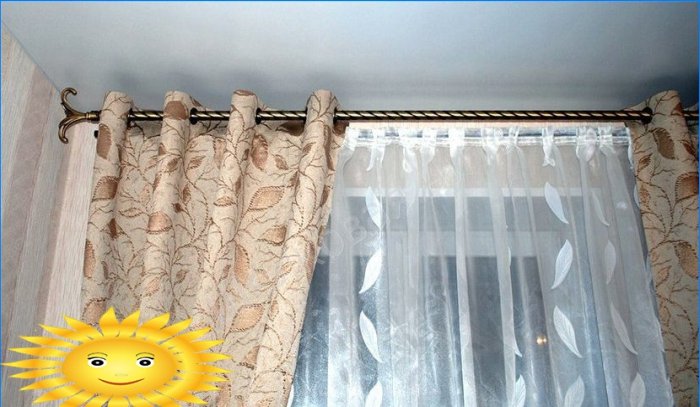
The curtains themselves can be hung on the cornice with the help of additional elements, such as hooks on the curtain tape, now this is a very common option, or clothespins, this option was quite popular before, and also without their use, only due to the design of the curtain – fastening on eyelet rings inserted into the curtain fabric, or by means of fabric loops sewn to the curtain.
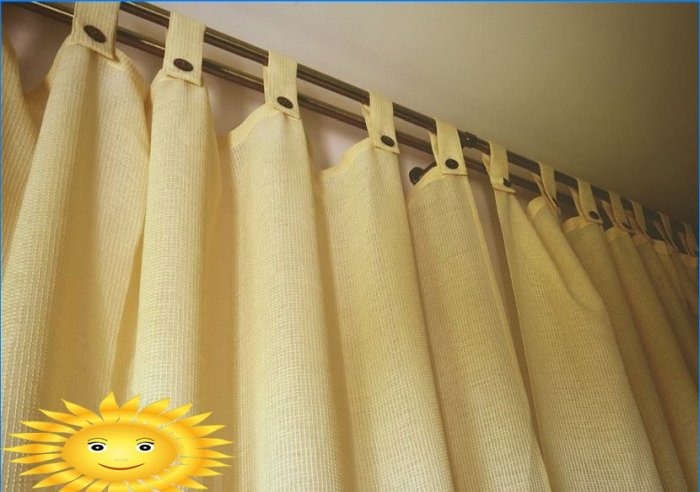
We will show you the process of creating a set of curtains on hinges for a kitchen window, consisting of 2 canvases – a blackout curtain and tulle, supplemented with decorative hooks. Note that sewing curtains requires only straight sewing skills, no curved elements, assemblies and folds are required. The curtains will be hung on the cornice in the form of a crossbar with attachment to the wall.
Features of designing curtains for the kitchen: the choice of material, models and sizes
First, consider the features of curtains for the kitchen, what nuances should be taken into account for this room.
First, the type of curtains. You should not make massive multi-row curtains with lambrequins, swagami or an abundance of decorative elements in the kitchen if this is not a kitchen-dining room. In a traditional small kitchen, such curtains will look massive and perhaps even ridiculous. Sometimes you can get by with just one tulle, if the window does not fall under the views from the side. If you want comfort and privacy in the evenings when the lights are on, then it is better to choose the option “tulle and curtain”.
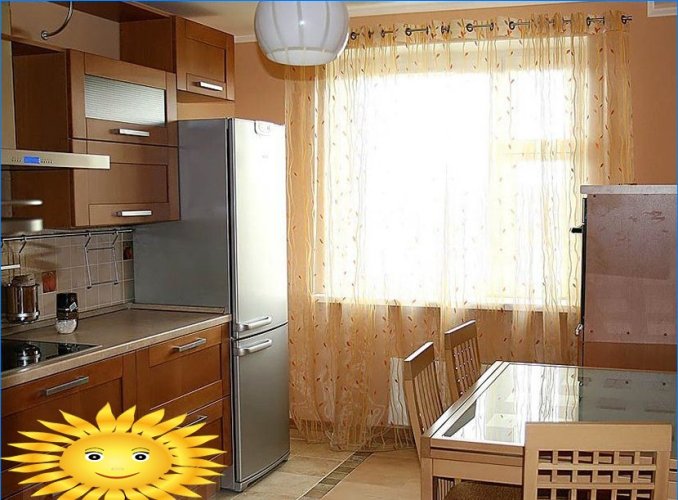
Secondly, the material. It is important to consider the distance from the so-called “wet” and “dirty” surfaces. If the curtain is located in close proximity to cabinets or household appliances, it can get dirty faster than curtains in rooms, so you should choose a fabric that is easy to wash – does not fade, does not form pills.
Thirdly, the shape and style. In the kitchen, there may be such elements as a balcony door, a countertop by the window, or a “winter refrigerator” in the wall under the window. It is important that the curtains do not restrict access to these objects, therefore, you need to think over the length and design of the canvases, taking into account the convenience of access to these elements of the kitchen space..

Fourth, the color scheme. It all depends on your taste and preferences, while the curtains should harmoniously fit into the kitchen design. For example, you should not choose fabric with the popular folk pattern “cucumbers” for a Scandinavian kitchen, or hang burlap and linen curtains for a kitchen with rich wooden fronts..
After all the nuances have been thought out and the fabric has been selected, you can start sewing.
Preparation of patterns and calculation of material for curtains on hinges
To sew curtains for the kitchen with your own hands, you will need the following accessories:
- Sewing machine – straight stitch and zigzag are enough.
- Large sharp scissors. Scissors with a scalloped edge will also come in handy for cutting tulle if the material is frayed, but you can do without them..
- Sewing centimeter or a large ruler for measuring fabrics when cutting.
- Threads, pins.
- Crayon or disappearing marker, you can also use a simple pencil (but not a pen!) To mark the fabric when cutting.
- Decorative hooks – they have all the highlight of the proposed option, but even without them the curtains will not lose their functional purpose.

Note that the curtain tape is unnecessary, as are the curtain rod rings, because the hinges will fit directly onto the curtain rail..
In shape, the curtains will be 2 rectangles (one of thick fabric and one of transparent) with sewn-in loops along the upper edge. The hinges are made from the same material as the main curtain.
In our version, there is a “winter refrigerator” under the window, so the curtains will not reach the floor for easy access to this area. The fabric was chosen in bright orange – this is the main color accent in a white kitchen. And tulle combines both shades and has a geometric pattern..
A few numbers: in this example, the length of the cornice is 140 cm, the height of the window is 170 cm.
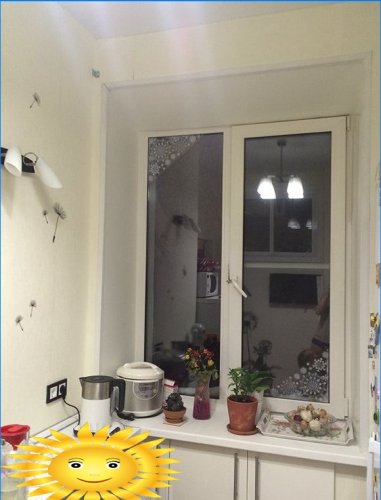
The size of the finished canvases is 140×200 cm. The width of the curtains is equal to the width of the cornice, since the kitchen space is rather limited and it makes no sense to add the width of the fabric for splendor. For loops, you need a piece of each type of fabric 25×200 cm.
Also, for sewing in loops, 2 additional cuts 140×15 cm are needed – they will cover the sewing places on the seamy side (hereinafter – seamy cuts).
We take out the sewing machine and start to sew
First, you need to cut the fabric for the canvases and loops. When working with tulle, pay attention to the lower factory edge – almost always it is equipped with a weighting edge. This edge is needed so that light curtains sag better and smoother. You can cut from it and in this case you do not need to hem the bottom, but if there is none, it’s okay, just hem the bottom edge with a double hem.
Otherwise, the sewing technology for different fabrics does not differ.
For the loops, you will need fabric rectangles measuring 25×12 cm in order to obtain loops of 10 cm (length) by 5 cm (width) in finished form. In total, you need 9 loops from each type of fabric.
To make a loop, we sew a rectangular blank along the long seamy side and turn it out onto the front side with a stick or the back of a pencil, iron it out. For thick fabric loops, the seam is placed in the middle so that later, after being folded in half, it is not visible, and for tulle loops – from the side, there it will be less noticeable, since the fabric is transparent.
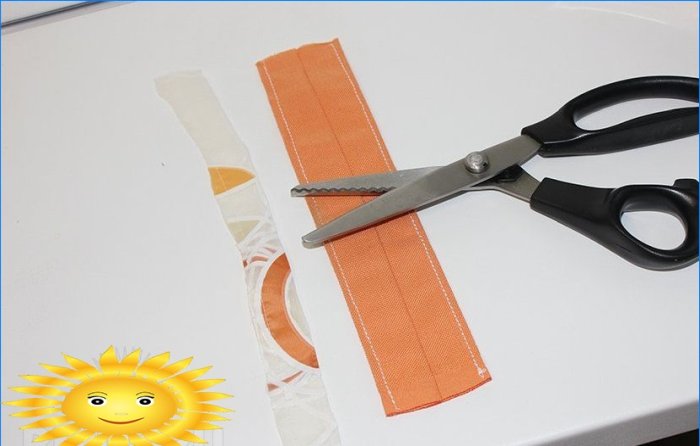
For thick buttonholes, add decorative topstitching.
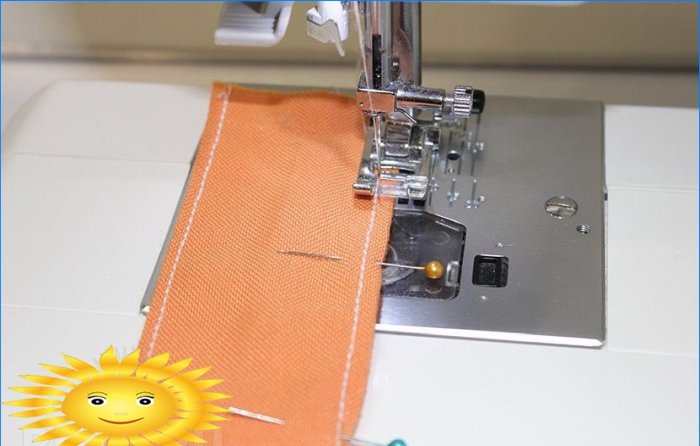
We carry out hemming of the bottom and side cuts of curtains. For the bottom, you can use a thick decorative stitch, or several stitches side by side. The threads can be contrasting, as in the example in the photo, or in tone to the fabric.
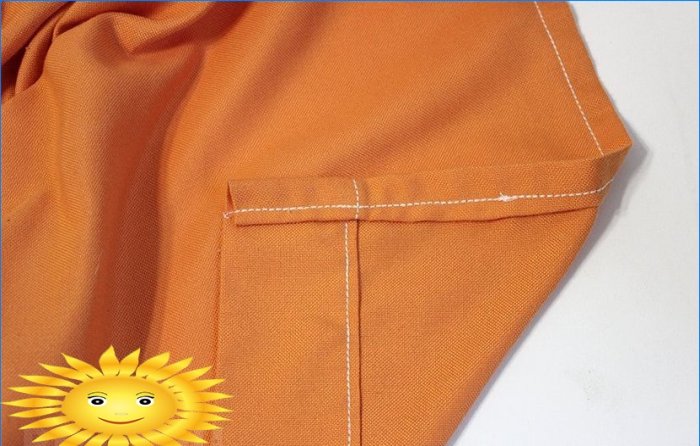
After the loops are ready and the fabrics are hemmed, you can start sewing the loops.
Sew the prepared seamy fabric cuts on all 4 sides. It is important here that the final width of the back cut exactly coincides with the width of the curtain, so they will be combined.
After that we put together a “sandwich” of 3 layers: the fabric of the main curtain folded in half 9 loops at a distance of about 13 cm from each other (the main thing is evenly), and the purl. That is, the loop seems to be inserted inside between two layers of fabric.
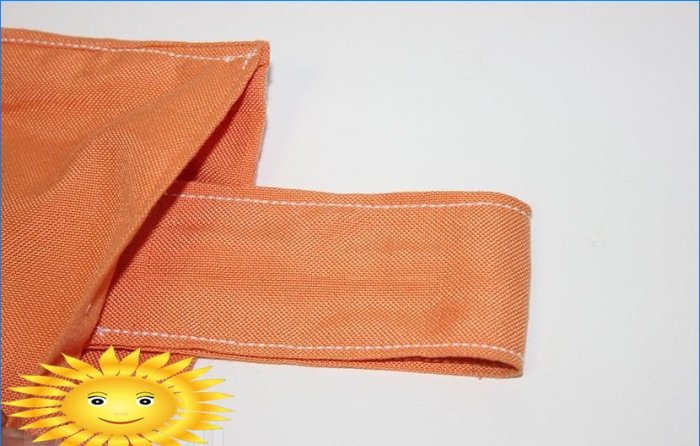
We fasten the resulting structure with pins or make a basting and stretch along the border of the seamy cut, while it is desirable to get into the line that was laid to hem the edges of the seamy cut. As a result, we get sewn loops and decorative stitching on the front side 8-10 cm from the upper edge of the curtain.
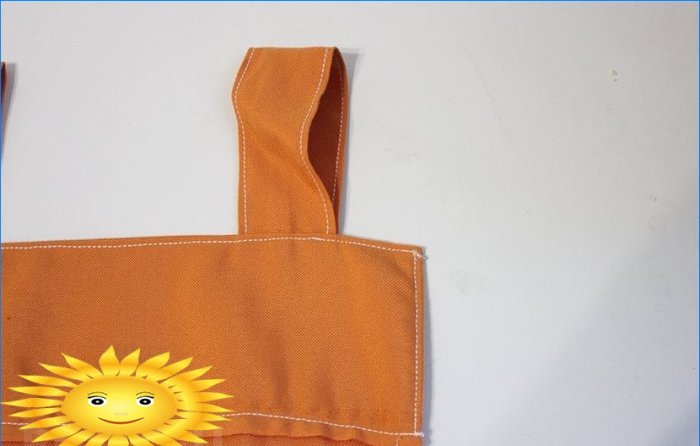
We repeat all the same steps with a transparent fabric curtain and the work is ready!
We decorate the kitchen window with a finished product
It remains only to hang the curtains on the cornice by the hinges, install it on the fasteners in the wall, and supplement with grabs.


Please note that both curtains are put on 1 cornice and in this form will not slide in different directions. But if you fundamentally push them to the sides, use a cornice with 2 rods and hang one curtain for each.
Below are the options for compositions from two paintings.
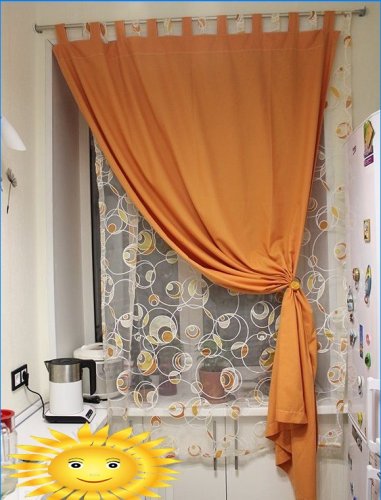
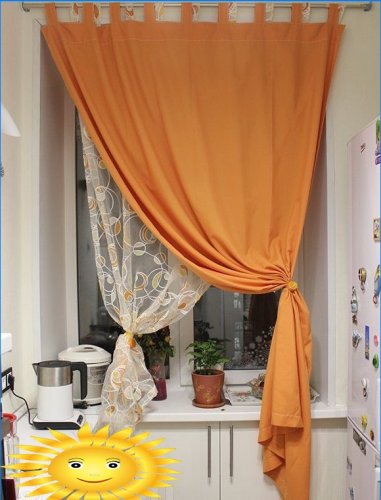
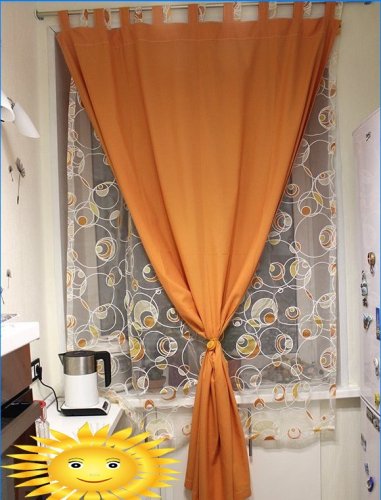
Do not be afraid to sew curtains with your own hands, make your kitchen beautiful and cozy!

I’m curious to know if anyone could share step-by-step instructions or any useful tips for sewing curtains for the kitchen. As a beginner in sewing, I’d appreciate advice on choosing the right fabric, measurements, and any specific techniques that could help me achieve a professional-looking result. Thank you!